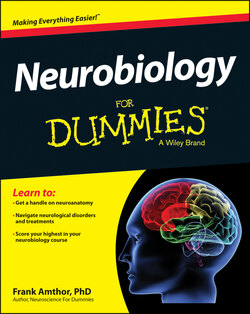Читать книгу Neurobiology For Dummies - Frank Amthor - Страница 62
Epigenetics
ОглавлениеEpigenetics is the change in gene expression (and thus, cell phenotype, which we discuss earlier in this chapter) due to mechanisms other than changes in the underlying DNA sequence. The most important epigenetic mechanisms are DNA methylation and histone modification. Other mechanisms include X chromosome inactivation, transvection, and paramutation. Teratogens (environmental agents that cause cancer) often act through epigenetic mechanisms.
Epigenetic changes may persist through all cell divisions of a cell and be passed to offspring. If this sounds “Lamarckian” to you, you’re partly right. In the original development of the theory of evolution, an alternative theory advanced by French biologist Jean-Baptiste Lamarck was that acquired characteristics could be inherited. Giraffes, for example, by stretching their necks to reach leaves on higher branches would give birth to offspring with longer necks.
However, we know that Lamarck’s hypothesis is not the main way that evolution works. An important difference exists between epigenetic and Lamarckian inheritance. The Lamarck hypothesis offers no specific mechanism by which a trait acquired or developed through practice can be inherited. In epigenetics, however, the change in DNA expression may or may not be linked to any behavior, and may or may not actually be selected for in terms of that behavior. Epigenetic changes work according to standard Darwinian evolution.
Epigenetic changes are crucial in the process of cellular differentiation during development, where totipotent stem cells (cells that can develop into any cell type) differentiate into hundreds of different cell types such as neurons, muscle cells, or liver cells. This happens because of epigenetic activation and inhibition of relevant genes preserved in subsequent cell divisions of that cell line.
